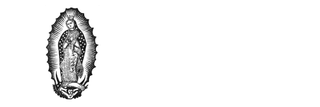The Virgin Mary and the Expansion of Spanish Christianity in the Old and New Worlds (10th - 17th Century)

This project examines the dynamics of Christian and non-Christian identities as they were expressed through the Virgin Mary in the pre-modern Spanish world on both sides of the Atlantic. Spanish Christians shaped the Virgin as a symbol of the twinned colonizing enterprises of military and spiritual conquest in medieval Spain and colonial Mexico. In Castile and Aragon they used Mary, the embodiment of the Church and of perfect Christian purity, to draw lines of demarcation between themselves and Jews and Muslims. These could be metaphoric lines of identity created by doctrinal differences and religious polemic or they could be physical ones of war. Mary’s martial function has been glossed over by most historians, perhaps because it disturbs their understanding of her as a compassionate maternal mediator. Yet this aspect of the Virgin raises crucial questions about gender and warfare. Muslims and Jews were well aware of how Christians used Mary. The Virgin became a point of distinction around which Christians, Jews, and Muslims could articulate oppositional identities. In these spiritual politics, Christians and Muslims had to find ways of dealing with the complex fact that Mary was a shared figure, belonging as much to Islam as to Christianity. The Virgin also served as a place of passage where religious lines could be crossed through conversion to Christianity. Christians depicted Mary as a particularly effective agent in the baptism of Jews, Muslims - a form of spiritual colonization. In Mexico, Spanish Christians continued to invoke Mary in the context of spiritual and military triumph. Yet there a different configuration of conquest and conversion meant that they tended to see her not so much as a boundary between themselves and the "other,” but instead as a symbol of universal empire over the colonized and Christianized peoples of the New World. For those Jews, Muslims, and Indians who converted to Christianity, the Virgin was a figure of power through whom they could express their new hybrid identities.
Through a major monograph and a series of articles, this project aims to show continuities in the attitudes of Spanish Christian towards religious and ethnic difference as the territory under their control expanded geographically first in the Iberian Peninsula and then in Mesoamerica. It thus challenges traditional scholarly dividing lines between the medieval and early modern periods. It also brings together minority groups that historians more typically treat separately - Jews, Muslims, and the indigenous peoples of the New World - and considers the Virgin of conquest and conversion from their perspective. Finally, this project demonstrates the potential that religious symbols such as the Virgin Mary have both to define boundaries of difference and to allow the crossing of those boundaries.

